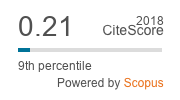Narrative Analysis, the Construction of Meaning and Identity
Keywords:
Narrative analysis, Meaning, Identity, Positioning, Qualitative researchAbstract
Subjectivity is a phenomenon widely debated among narrativist perspectives in Psychology. One important
question in this area of research pertains to the analysis of narrative constructions of an individual in research contexts. In this study, we aimed to present and discuss an analytical approach to investigate the phenomenon of identity grounded on narrativist perspectives and discursive psychology, which are based on a specific form of narrative analysis: the positioning analysis. We present a case study with the objective to investigate the construction of meaning of identity by individuals who had bariatric surgery performed. Our goal is to broaden the discussion of analytical tools and link them to specific theoretical and methodological frameworks within the “interpretive turn”. We hope to show a plausible investigative approach integrating
narrative and subjectivity in Psychology.
References
Bamberg, M. (2004). I know it may sound mean to say this, but we
couldnt really care less about her anyway: Form and Functions
of “Slut Bashing” in Male Identity Constructions in 15-Year-
Olds. Human Development, 249, 1-23.
Bamberg, M. (2005). Encyclopedia entries on “Agency”, “Master
Narratives”, and “Positioning”. In D. Herman, M. Jahn, &
M.-L. Ryan (Eds.), The Routledge encyclopedia of narrative
theory. New York: Routledge. Recuperado em 26 de novembro
de 2013, de http://www.clarku.edu/~mbamberg/publications.
html
Bamberg, M. (2008a). Selves and identity in the making: The study
of microgenetic processes in interactive pratices. In U. Müller,
J. Carpendale, N. Budwig, & B. Sokol (Eds.), Social life and
social knowledge (pp. 205-224). Mahwah, NJ: Erlbaum.
Recuperado em 26 de novembro de 2013, de http://www.
clarku.edu/~mbamberg/publications.html
Bamberg, M. (2008b). Sequencing events in time or sequencing
events in story-telling? From cognition to discourse ”“ With
frogs paving the way. In J. Guo, S. Ervin-Tripp, & Nancy
Budwig (Eds.), Festschrift for Dan Slobin (pp. 127-136)
Mahwah, NJ: Lawrence Erlbaum Associates. Recuperado
em 26 de novembro de 2013, de http://www.clarku.
edu/~mbamberg/publications.html
Bamberg, M. (2008c). Twice-told-tales: Small story analysis
and the process of identity formation. In T. Sugiman, K. J.
Gergen, W. Wagner, & Y. Yamada (Orgs.), Meaning in action:
Construction, narratives and representation (pp. 183-204).
New York: Springer. Recuperado em 26 de novembro de 2013,
de http://www.clarku.edu/~mbamberg/publications.html
Bamberg, M. (2012). Narrative analysis. In H. Cooper (Ed.), APA
handbook of research methods in psychology (pp. 77-94).
Washington, DC: APA Press. Recuperado em 26 de novembro
de 2013, de http://www.clarku.edu/~mbamberg/publications.
html
Bamberg, M., & Georgakopoulou, A. (2008). Small stories as a
new perspective in narrative and identity analysis. Text & Talk,
(3), 377-396. Recuperado em 26 de novembro de 2013, de
http://www.clarku.edu/~mbamberg/publications.html
Brockmeier, J., & Harré, R. (2003). Narrativa: Problemas e
promessas de um paradigma alternativo. Psicologia: Reflexão
e Crítica, 16(3), 525-535.
Bruner, J. (1991). The narrative construction of reality. Critical
Inquiry, 17, 01-21.
Bruner, J. (1997). Atos de significação. Porto Alegre: Artes Médicas.
Castro, A. L. (2007). Culto ao corpo e sociedade: Mídia, estilos de
vida e cultura de consumo (2ª ed.). São Paulo: Fapesp.
Davies, B., & Harré, R (1999). Positioning and personhood. In R.
Harré & L. van Langenhove (Eds.), Positioning Theory (pp.
-52). Oxford: Blackwell Publishers.
Germano, I., & Serpa, F.A. (2008). Narrativas autobiográficas
de jovens em conflito com a lei. Arquivos Brasileiros de
Psicologia, 60(3), 9-22.
Goldenberg, M., & Ramos, M. S. (2007). Apresentação. In M.
Goldenberg (Ed.), Nu e vestido: Dez antropólogos revelam a
cultura do corpo carioca (pp. 7-17). Rio de Janeiro: Editora
Record.
Harré, R., & Gillet, G. (1999). A mente discursiva: Os avanços na
Ciência Cognitiva. Porto Alegre: Artes Médicas.
Jovchelovitch, S., & Bauer, M. W. (2008). Entrevista narrativa.
In M. W. Bauer & G. Gaskell (Eds.), Pesquisa qualitativa
com texto, imagem e som: Um manual prático (pp. 90-113).
Petrópolis: Vozes.
Korobov, N., & Bamberg, M. (2006). “Strip poker! They don’t
show nothing!” Positioning identities in adolescent male talk
about a television game show. In M. Bamberg, A. DeFina, & D.
Schiffrin (Eds.), Narratives in interaction: Identities and selves
(pp. 253-271). Amsterdam: John Benjamins. Recuperado em 26
de novembro de 2013, de http://www.clarku.edu/~mbamberg/
publications.html
Lira, G. V., Catrib, A. M. F., & Nation, M. K. (2003). A narrativa em
pesquisa em pesquisa social em saúde: Perspectiva e método.
Revista Brasileira em Promoção da Saúde, 16(1/2), 59-66.
Marcuschi, L. (2008). Análise da conversação. São Paulo: Ática.
McAdams, D. P. (2001). The psychology of life stories. Review of
General Psychology, 5(2), 100-122.
Moutinho, K. (2010). A construção narrativa de sentidos de
bioidentidade: Obesidade e cirurgias bariátricas (Unpublished
doctor dissertation).Programa de Pós-Graduação em Psicologia
Cognitiva, Universidade Federal de Pernambuco, Recife,
Brasil.
Moutinho, K., Meira, L., & De Conti, L. (2013). Desenvolvimento e
construção narrativa de sentidos de identidade. In K. Moutinho,
P. Villachan-Lyra, & A. Santa-Clara (Eds), Novas tendências
em Psicologia do Desenvolvimento: Teoria, pesquisa e
intervenção (pp. 133-158). Recife: Editora da Universidade
Federal de Pernambuco.
Ortega, F. (2003). Práticas de ascese corporal e constituição de
bioidentidades. Cadernos Saúde Coletiva, 11(1), 59-77.
Ortega, F. (2005). Da ascese à bio-ascese ou do corpo submetido Ã
submissão ao corpo. In M. Rago, L. B. L. Orlandi, & A. Veiga-
Neto (Eds.), Imagens de Foulcault e Deleuze: Ressonâncias
nietzchianas (pp. 139-173). Rio de Janeiro: DP & A.
Ortega, F. (2008). O corpo incerto: Corporeidade, tecnologias
médicas e cultura contemporânea. Rio de Janeiro: Garamond.
Riessman, C. K. (2005). Narrative Analysis. In N. Kelly, C.
Horrocks, K. Milnes, B. Roberts, & D. Robinson (Eds.),
Narrative, memory & everyday life (pp 1-7). Huddersfield,
England: University of Huddersfield.
Sarbin, T. (1986). Narrative Psychology: The storied nature of
human conduct. New York: Praeger.
Sibilia, P. (2004). O pavor da carne: Riscos da pureza e do sacrifício
no corpo-imagem contemporâneo. Famecos, 25(4), 68-84.
van Langenhove, L., & Harré, R. (1999). Introducing Positioning
Theory. In R. Harré & L. van Langenhove (Eds), Positioning
Theory (pp. 14-31). Oxford: Blackwell Publishers.



